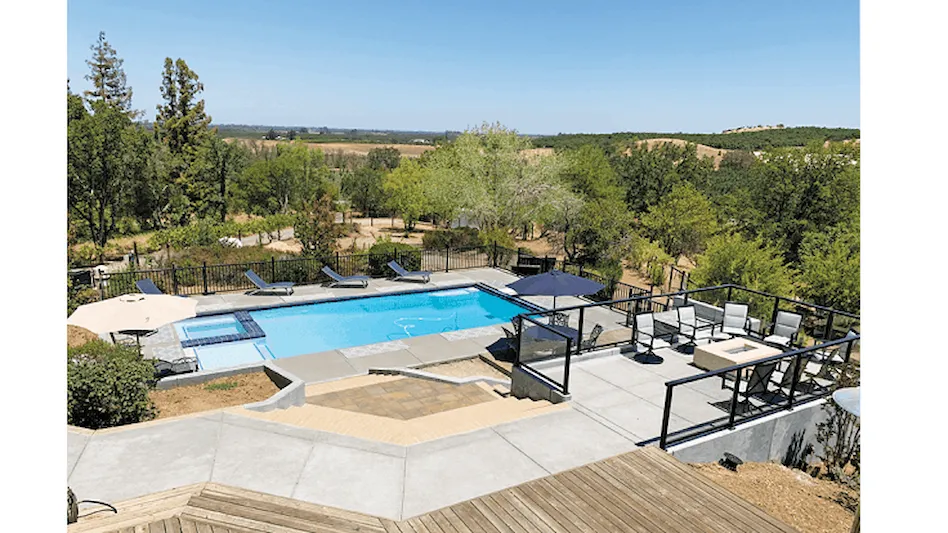
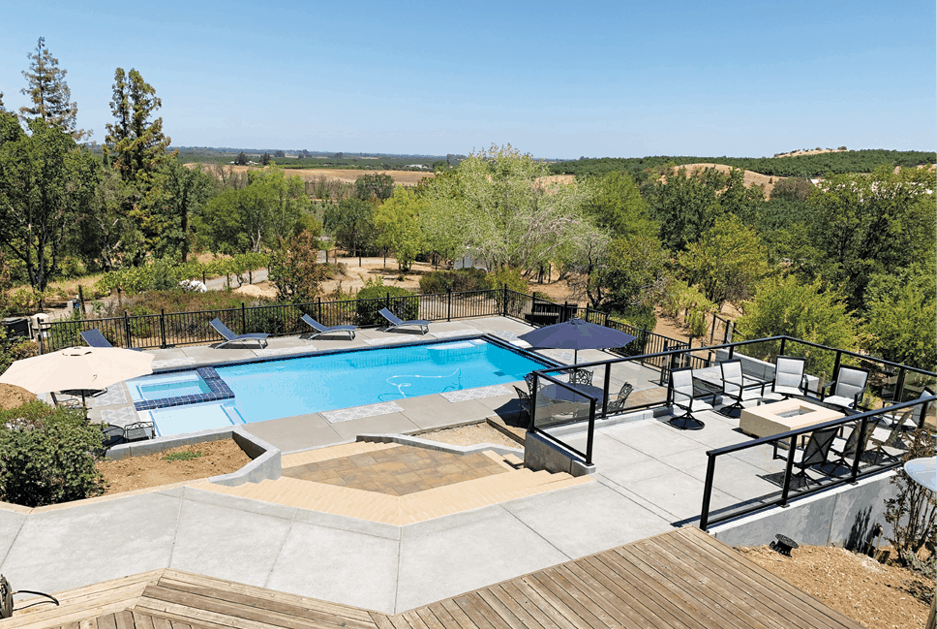
Sequestered by stay-at-home orders and travel restrictions, homeowners across the country are creating their own backyard escapes instead.
Pools and spas rank high on outdoor wishlists, causing a surge of demand that has inundated pool builders, creating massive backlogs and long wait lists.
“No one in the pool industry has ever seen a phenomenon like the reaction that COVID has caused,” says David B. Katz, who founded his landscape company in New York in 1985, The Land of ELITE, which merged with The Neave Group Outdoor Solutions in June 2020.
By this June, Katz’s company was already booked for the next 12 months with three times more pool requests than usual, leading to nearly 60% more projects than planned. Other companies are looking “two and three years out on pools,” he says, “and I don’t think (the demand) is going to let up anytime in the next five years.”
This deluge of demand triggered a chain of challenges for pool companies pinched by labor shortages, product delays and price hikes. Here’s how contractors are navigating the uptick to make sure pool projects go swimmingly.
Fielding an uptick in inquiries.
When pool requests outweigh a company’s capacity, contractors can afford to be picky about the projects they take on.
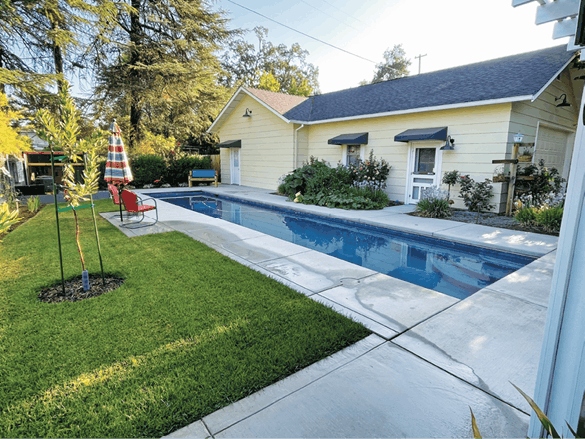
“Although the number of projects we’ve taken on has not necessarily increased, we have seen a large uptick in the interest in swimming pools because everyone’s spending so much time at home,” says Tyler McClure, president of Outdoor Dynamics near Dallas. He added the company gets between 10-30 leads every month through word-of-mouth referrals. “It’s allowed us to be highly selective of the clients we choose to work with,” he says.
McClure’s ideal clients have a clear vision of what they want and the budget to invest in a high-quality, custom-designed pool. “If a client just wants a hole in the ground, I have to tell them upfront that our projects are generally more expensive than production builders,” says McClure, whose pool projects start around $150,000 and push to $750,000 if they include other outdoor living features like kitchens, firepits and pool houses.
Pool and spa requests have similarly tripled for Andy Gagnon since the pandemic began. “We get way more inquiries than we can handle,” says Gagnon, who founded Andy Gagnon Landscapes in 1980 and acquired Cricket Pools in 1996, when the previous owner retired. Currently, prospective clients must wait three months just to have an initial meeting with him.
Besides budget, location is also a critical factor when prescreening potential projects. “I don’t want to have my crews on the road going to a jobsite 40 minutes away,” says Gagnon, who prefers to work within a 15- to 20-mile radius of his company’s headquarters in Woodland, California. “We prescreen clients to find out where they’re located, talk to them about their budget and see if they’re willing to wait based on our time schedule. If all that fits, then we’ll pay a visit.”
“No one in the pool industry has ever seen a phenomenon like the reaction that COVID has caused.” David B. Katz, founder of The Land of ELITE
Although Katz’s company covers a larger, 60-mile radius that extends into three states, COVID gave him an unexpected opportunity to rethink client meetings. “We’ve done it all virtually,” he says. “That saves a huge amount of time, so you can see more people.”
Even after the COVID restrictions are lifted, Katz predicts that this change “is going to stick.”
“Why do I need to go to a client’s house to present designs (when) I can do a screenshare?” he says.
Handling higher work volumes.
While hiring additional employees seems like an instant solution to address the spike in demand, pool contractors nationwide can commiserate with the labor shortages that are limiting their capacity.
“I’d like to expand my staff, but I’ve had a very difficult time getting anybody in the door,” says Gagnon, who employs between 18 to 24 people throughout a typical season. “I’ve found that to be one of the toughest things to deal with this year.”
In fact, Gagnon is short one crew this season, since a foreman is out on medical leave and a few other employees didn’t return. “I’ve had to dial back my expectations for production,” he says, “because we’re operating with just four crews.”
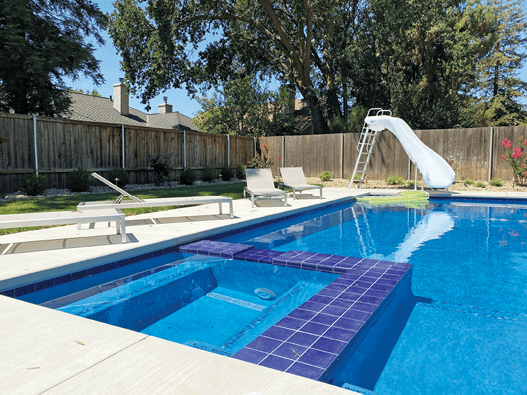
McClure currently does most of the design work for Outdoor Dynamics as a solo owner/operator, but he’s trying to hire an architectural designer to free up some time and increase his capacity. Even with help from professional recruiters, he still hasn’t found the right candidate after six months of searching.
Instead, McClure subcontracts specialized tradesmen to create construction documents and install his pool designs. During the pandemic surge, he says, “We’ve had to bring in more subcontractors, and we’ve had to let some go that just couldn’t keep up with the demand.”
Coordinating subcontractors for pool projects requires a delicate balancing act — especially during a pandemic.
“I’m trying to give them more notice when we’re ready for steel, gunite (concrete)or plaster,” says Gagnon, who regularly subs out those specialties to supplement his pool crews. “We try to schedule the plaster six weeks to two months in advance. All the subcontractors are booked, so you have to be really conscientious of your scheduling.”
Navigating supply shortages.
In previous years, Katz could order pool liners and have them delivered to a jobsite within just a few days. Now it takes two or three months. Shipping delays have multiplied lead times for materials and equipment, pushing back project timelines from five to seven months and extending his waiting list of pool seekers into next summer.
“No one anticipated the supply and demand issues, so at the onslaught, you couldn’t get piping or steel,” says Katz, chair of the Pool and Hot Tub Alliance Builders Council. “Now, we’re pre-ordering material in large volumes — 3,000 or 4,000 feet of pipe at a clip — and letting our vendors know the volume of projects we have going on so they can supply the materials we need.”
Another advantage of pre-ordering supplies is locking in prices. Early this year, Gagnon put together a material list for pipe fittings, light niches, skimmers and other basic supplies. “I figured I had about eight or nine pools to build this year, so I ordered all the material early on,” he says. “I won’t have to deal with shortages or price increases.”
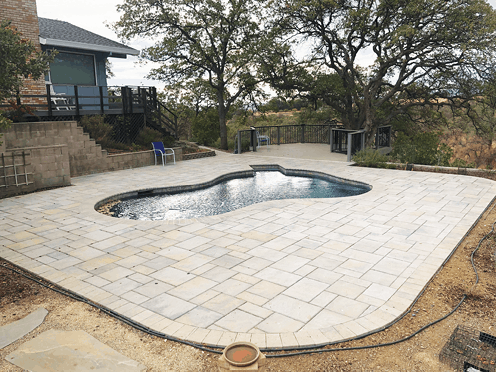
While it can be convenient to pre-order common pool-building materials, it’s tricky to predict specialized products for custom designs. That’s why Gagnon waits to order filters, pumps, time clocks and heaters until he knows the project specifics. McClure, likewise, stocks up on certain supplies, but waits to source equipment until each contract is signed.
Being booked out into next year provides some extra lead time to order specialty supplies before they’re needed on a jobsite. But some product delays are so significant that Gagnon and McClure explore alternative materials instead of waiting for items to be restocked.
“As an example, we might finish a pool interior with a quartz,” Gagnon says. “My installers had a hard time getting [plaster] and they notified me two weeks before we’re going to plaster a pool, so I went to the client and said, ‘This material isn’t available. Are you willing to upgrade to this other material, at cost, so we can stay on schedule to get your pool finished?’ The client (agreed to) pay the extra $2,000. Sometimes it’s hard to anticipate (delays), so communicating with clients is key.”
Juggling price increases.
Even though McClure pre-orders as many materials as possible, price increases have been unavoidable. While plumbing, steel and concrete prices have crept up since COVID, he says pool equipment costs have risen by 20-30% over the last year, exacerbated by the February freeze that devastated Texas.
To compensate, McClure increased his prices between 15 and 20% overall. “We’re trying to only increase where necessary,” he says. “It’s caused us to take lower margin ourselves, because we still want to deliver a fair value to our clients.”
“I’ve had to dial back my expectations for production because we’re operating with just four crews.” Andy Gagnon, founder of Andy Gagnon Landscapes
With more than four decades of price fluctuations under his belt, Gagnon revisits his pricing structure every year to anticipate cost increases over time. But typically, he says pool equipment suppliers only bump their costs by 3 to 5% a year, making these wild price swings impossible to predict.
“On one particular job, we’re doing a steel arbor patio cover, and between the time I priced it to the time I purchased the materials, it had gone up about a third,” he says. “You can’t go back to the client and say, ‘Hey, the price went up on this,’ because you’ve got a contract.”
Now, Gagnon is considering adding a clause to his estimates that would give his company the ability to adjust project pricing as costs shift unexpectedly. “We’re bidding jobs six months out,” he says. “We want to be able to cover the cost increases when the time comes to build it.”
He says the key to managing all these challenges surrounding COVID — from the flood of requests to the product delays to the unpredictable price hikes — is simply transparent communication. Staying in contact with customers, suppliers and subcontractors is critical to navigating the pool construction influx.
“You have to manage client expectations,” Gagnon says. “If you can get ahead of that and explain to clients in initial meetings that, ‘We’re experiencing some delays and it’s out of our control,’ it makes the process go much smoother. It’s when you don’t communicate with clients that they get upset, so communication is really important — even more now than it has been in the past.”

Explore the September 2021 Issue
Check out more from this issue and find your next story to read.





